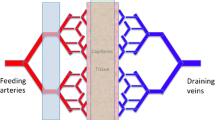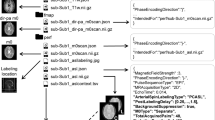Abstract
Since its inception in the early 1990s, arterial spin labelling (ASL) has been developed in numerous variants. Tremendous improvements in both pulse sequences and hardware have allowed improved image quality and reduced scan time, to the point where the technique might be ready for clinical application. However, although now routinely used in research centres and universities, its application in daily clinical routine remains restricted to a few centres. Its popularity in magnetic resonance imaging (MRI) research centres and among physicists may have contributed to the lack of enthusiasm from the clinical community, as the variety of possible sequences available might deter even the most die-hard technology-driven neuroradiologist from using this technique. Therefore, a joint action directed towards the harmonisation of all the existing ASL pulse sequences and the development of a reliable and common post-processing pipeline to provide guidance for the major MRI manufacturers was recently endeavoured and dubbed the ‘ASL Network’ (http://www.asl-network.org). This network was established to provide a communication platform among physicists, engineers and clinicians who are keen to see this technique finally make it to daily clinical practice. Finally, a networking European Grant from the COST Office was secured to help fund some of the activities of the ASL Network, in particular as they pertain to the application of ASL in dementia (http://www.cost.eu/domains_actions/bmbs/Actions/BM1103). Here, both the ASL Network and the COST Action are described, with their respective goals and aspirations.
Similar content being viewed by others
References
Wintermark M, Sesay M, Barbier E, Borbely K, Dillon WP, Eastwood JD, Glenn TC, Grandin CB, Pedraza S, Soustiel JF, Nariai T, Zaharchuk G, Caille JM, Dousset V, Yonas H (2005) Comparative overview of brain perfusion imaging techniques. Stroke 36(9):2032–2033
Grobner T (2006) Gadolinium–a specific trigger for the development of nephrogenic fibrosing dermopathy and nephrogenic systemic fibrosis? Nephrol Dial Transplant 21(4):1104–1108
Petersen ET, Zimine I, Ho YC, Golay X (2006) Non-invasive measurement of perfusion: a critical review of arterial spin labelling techniques. Br J Radiol 79(944):688–701
Deibler AR, Pollock JM, Kraft RA, Tan H, Burdette JH, Maldjian JA (2008) Arterial spin-labeling in routine clinical practice, part 2: hypoperfusion patterns. AJNR Am J Neuroradiol 29(7):1235–1241
Deibler AR, Pollock JM, Kraft RA, Tan H, Burdette JH, Maldjian JA (2008) Arterial spin-labeling in routine clinical practice, part 3: hyperperfusion patterns. AJNR Am J Neuroradiol 29(8):1428–1435
Hendrikse J, Petersen ET, Cheze A, Chng SM, Venketasubramanian N, Golay X (2009) Relation between cerebral perfusion territories and location of cerebral infarcts. Stroke 40(5):1617–1622
Pollock JM, Tan H, Kraft RA, Whitlow CT, Burdette JH, Maldjian JA (2009) Arterial spin-labeled MR perfusion imaging: clinical applications. Magn Reson Imaging Clin N Am 17(2):315–338
Petersen ET, Mouridsen K, Golay X (2010) The QUASAR reproducibility study, part II: results from a multi-center Arterial Spin Labeling test-retest study. Neuroimage 49(1):104–113
Gevers S, van Osch MJ, Bokkers RP, Kies DA, Teeuwisse WM, Majoie CB, Hendrikse J, Nederveen AJ (2011) Intra- and multicenter reproducibility of pulsed, continuous and pseudo-continuous arterial spin labeling methods for measuring cerebral perfusion. J Cereb Blood Flow Metab 31(8):1706–1715
Hort J, O’Brien JT, Gainotti G, Pirttila T, Popescu BO, Rektorova I, Sorbi S, Scheltens P (2010) EFNS guidelines for the diagnosis and management of Alzheimer’s disease. Eur J Neurol 17(10):1236–1248
Acknowledgments
This News article was supported by European COST Action BM1103 on “Arterial spin labelling Initiative in Dementia (AID)”. The authors would like to thank Dr. D. Thomas for help with the editing of the manuscript.
Author information
Authors and Affiliations
Corresponding author
Rights and permissions
About this article
Cite this article
Golay, X., Guenther, M. Arterial spin labelling: final steps to make it a clinical reality. Magn Reson Mater Phy 25, 79–82 (2012). https://doi.org/10.1007/s10334-012-0308-9
Published:
Issue Date:
DOI: https://doi.org/10.1007/s10334-012-0308-9




